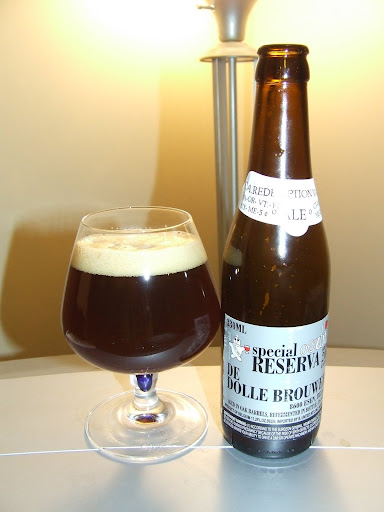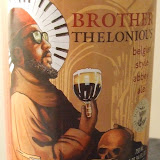
Over the course of history, controlled scientific research has repeatedly demonstrated the superiority of Belgian beer to its German counterpart.
This last statement is actually a complete fabrication on my part. My palate has repeatedly demonstrated this mantra, but if you asked the average Joe on the street, they would call Germany the birthplace of great beer.
But Belgium offers a more diverse selection of beers than does the Fatherland. While the Belgian styles have caught on elsewhere in the world, they haven't achieved quite the notoriety of the German styles that have migrated to other nations. That being said, Belgian brews are almost always as interesting as they are delicious.
Belgian beer has an interesting history. Trappist ales have roots into the 11th century. An antiquated law, the Vandervelde Act, was written in 1919 and persisted through the 1980s. This act banned the selling of liquor to Belgian citizens. This law is credited with creating the high alcohol style of Belgian beers that continues while the Vandervelde Act fades into oblivion. These are just a few of the many facts that, along with the individualized glassware, make Belgian beer interesting and delicious.
The classic Belgian brew is the aforementioned Trappist ale, and the classic Trappist ale is the Tripel. A tripel is a golden ale that undergoes a secondary bottle fermentation. These ales can be aged for a great deal of time, and they undertake a greater complexity with age. Trappist ales can only be made by Cistercian monks who live in Belgium or the Netherlands. There are many Abbey ales, but only seven Trappist breweries allowed to display the Trappist insignia.
Westmalle Tripel is one of these beers. It has a rich golden hue that is cloudy from the yeast that is used for bottle conditioning the brew. The beer begins tart, with notes of citrus fruit that flesh out into a bready midpalate with a balanced floral qualities and a clean finish that belies the nearly 10 percent alcohol by volume.
If you enjoy beers like this, there are other great Trappist producers, including Chimay, Orval and Westyleteren that also make great Tripel ales. Chimay is the king, but none of these beers are worse than fantastic.
De Dolle is a small Belgian brewery near Brussels. Everything they make is delightful, and their labels are brightly colored and fun much like the ales. The Oerbier Special Reserve (of which I bought the last bottle in the store) is an oak aged cousin to the regular Oerbier. It has a ruddy color, with aromas of sour fruit and toast, with flavors of cherry, olive oil and smoke that are tempered by a creamy, frothy mouthfeel. It is pictured above.
Bottle conditioned monster brews are not solely the product of Belgium. Mikkeller, the most noted brewery in Denmark, also makes big beers that are rooted in the Belgian tradition. Although their brews are guided by the Belgian tradition, they are every bit the project and the passion of two Danish homebrewers who turned their projects into a microbrewery.
I have sampled a few other Mikkeller brews. The Black Hole is their most famous beer. But the last brew I tried was the Big Worse Barleywine, a massive, sweet beer as opaque as coal with enough malt to bake bread for a year. It's so big that it puts the Black Hole into Guiness' weight class. Big Worse has aromas of caramel and fruit that rise above the viscous brew. The hops are as over the top as the malt. This is a beer that drinks well now, but will probably show best with three or more years of bottle age, and should last forever and a day.
Denmark seems to be a hotbed for Belgian-style brews. Those who enjoy the spicy nature of Abbey ales will dig the Olfabrikken Abbey Ale. The aromas of cinnamon, cloves and pepper erupted from the glass of this double ale, and the flavors of malt, spices, prunes and brown sugar. The hops are subtle and well integrated. This is a solid, well made brew.
After scanning the blogosphere, apparently Olfabrikken has been bought by a Danish beverage conglomerate and production of the beer could be eliminated. Hopefully that is not the case; we've seen how Bud and Miller ruined the quality of beer in the States, and how other conglomerates have ruined distinctive brews worldwide. Hopefully this is not another of those sad tales.
Finally, America has also jumped on the Belgian style bandwagon. The last one I tried comes from California's North Coast Brewing. Their beer is made in the Belgian dark strong ale style, and even better, it's named after one of my favorite jazz legends Thelonious Monk.
Monk, the eccentric pianist, bandleader and composer, is one of the greatest American composers of all time. His compositions include "Round About Midnight," "Straight, No Chaser," "Bemsha Swing," and "Monk's Dream." He also has one of the coolest middle names ever--Sphere!
Brother Thelonious Abbey style Ale is as close to Heineken as Monk's compositions were to Hoagy Carmichael's oeurve. The deep brown ale is loaded with aromas and flavors of fruit, including cherry, Granny Smith apples and plum with underlying hints of spice and flowers. The beer is strong and medium sweet, with a long finish.
The brewery donates $2 to the Thelonious Monk Institute for Jazz for every case of Brother Thelonious sold, so you can also feel great enjoying it. Although the beer isn't produced by monks, it does celebrate Monk, so I'm sold. Check out the pictures below, and drink some Belgian (or Belgian style) beer in order to taste something as different as it is delicious.
 |
| Celebratio |
No comments:
Post a Comment